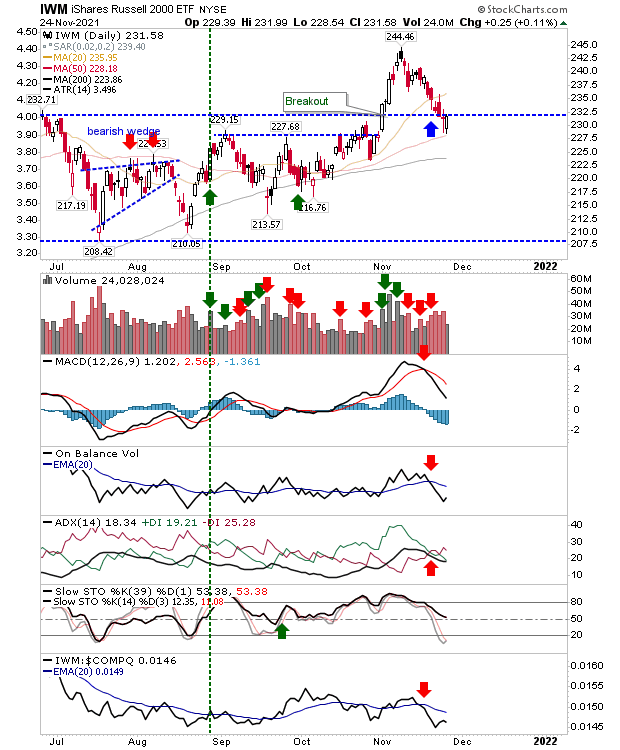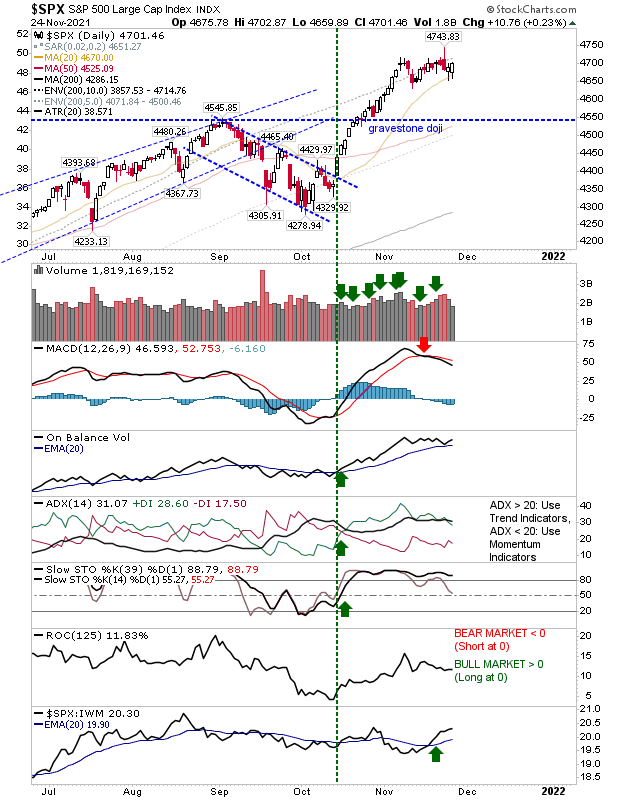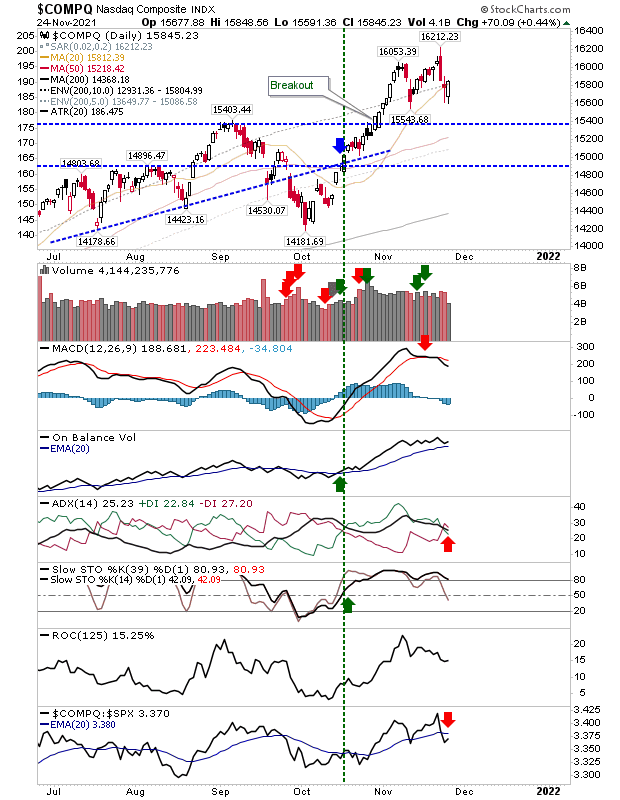Indices pushed to reverse Tuesday's losses with respectable gains. Best of the indices was the Russell 2000. Despite having been unable to hold breakout support, it managed to defend its 50-day MA—at least for now.
Technicals, aside from stochastics [39,1], are bearish, but those intermediate time frame stochastics are finally at a level where swing low support typically kicks in for an asset in a bull market. This confluence of support might be the recipe to save Small Caps and put a stop to the selling.

What this means for other indices remains to be seen. The S&P was able to rally from its 20-day MA, but the proximity of this moving average to what was a sharp reversal on Monday might not protect it for too long. However, the index was trading well above breakout support of 4,545, so even if there was an undercut of its 20-day MA, it could still come out with a positive, even if selling extended in this index.
The slowly rising 50-day MA was an alternative support level to watch in the coming weeks. Technicals were mostly positive. The MACD 'sell' was positioned well above the bullish zero line and had the makings for a pullback rather than a selloff. The sharp improvement in relative strength against Small Caps was another big tick in its favor.

The NASDAQ was not looking so positive. Monday's selling looked the most damaging of the indices, and the risk for a double top remained a concern. It also had a smaller buffer it can use down to breakout support of 15,400.
We have started to see a shake up in the technical picture with the 'sell' in the MACD now joined by a 'sell' in ADX (trend strength), and a loss in relative performance over Large Cap stocks.
The bullish picture for this index was gradually breaking down and if there were signs of collapse, the NASDAQ was likely to be the first index to suffer should sellers accelerate their actions.

We are starting to see a key split in market strength. The Russell 2000 had taken the brunt of the initial sell off, but did so in a more orderly manner—allowing traders to find support and attract demand at a critical support level.
The NASDAQ was looking ripe for a sell off, and any panic to emerge in this index would likely benefit the S&P in the short term. Should the October swing low get undercut in the NASDAQ—or my expected buying in the Russell 2000 fail to appear at its 50-day MA—then things could get ugly fast; to the point I may not expect to see the traditional long term support level of the 200-day MA in the Russell 2000 hold out for long.
